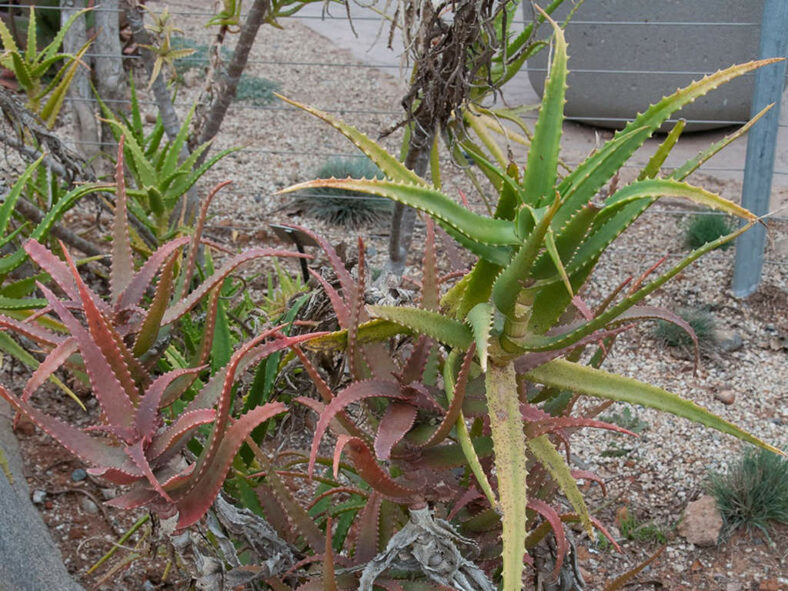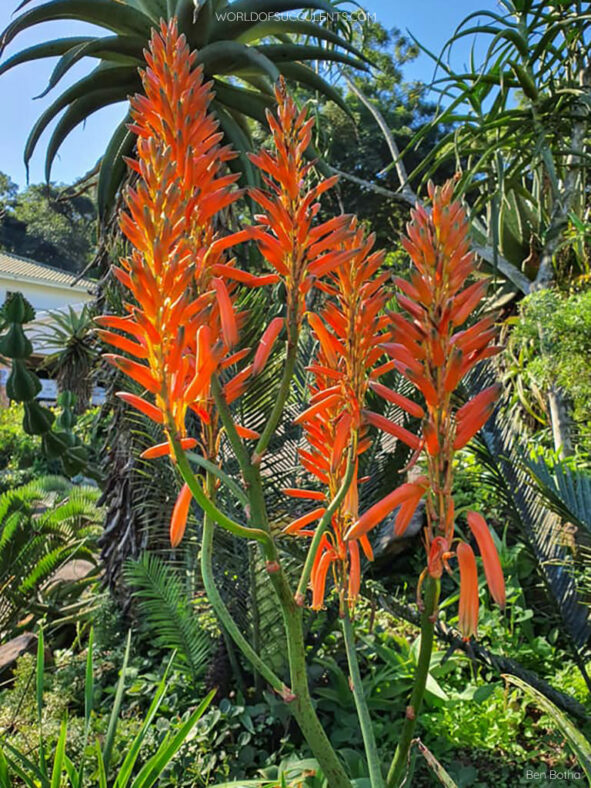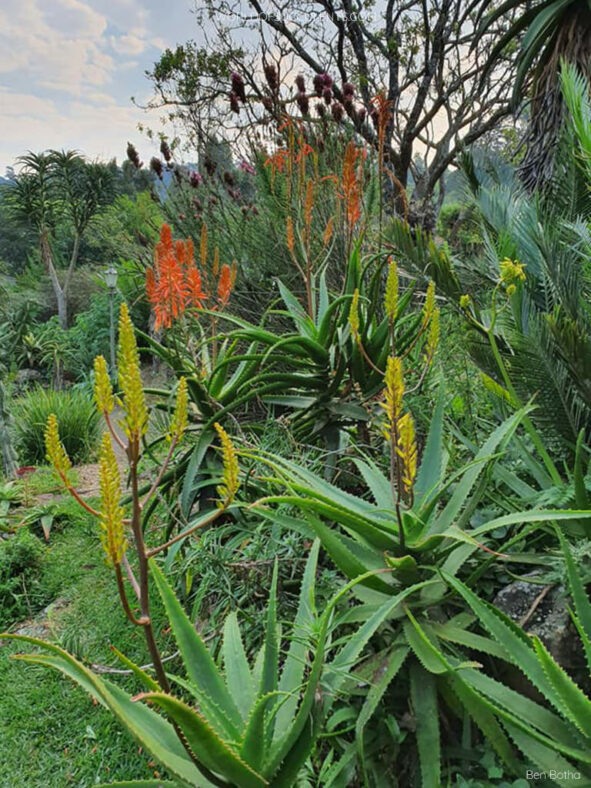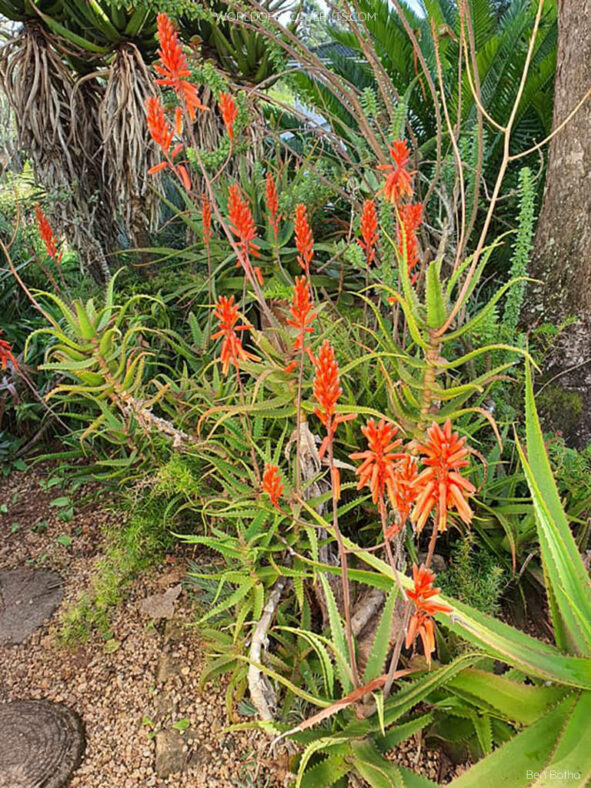Aloe dawei is often mistaken for Aloe cameronii but can be distinguished by its taller stems and longer, thinner leaves.
Scientific Name
Aloe dawei A.Berger
Common Name(s)
Dawe's Aloe
Synonym(s)
Aloe beniensis, Aloe pole-evansii
Scientific Classification
Family: Asphodelaceae
Subfamily: Asphodeloideae
Genus: Aloe
Etymology
The specific epithet "dawei (pronounced DAW-ee-eye)" honors Morley Thomas Dawe (1880-1943), a British forester in Uganda and curator of the Entebbe Botanical Garden.
Origin
Aloe dawei comes from the mountains of eastern and central Africa (Congo, Uganda, Rwanda, and Kenya). It grows in grasslands and thickets from 2,500 to 5,000 feet (600 to 1520 m) in elevation.
Description
Aloe dawei is a succulent plant with erect or decumbent stems and fleshy, lance-shaped leaves with reddish-brown teeth along the margins. The stem can grow up to 6.6 feet (2 m) tall and branch from the base, forming large clumps with age. The leaves are olive green to dark green, sometimes tinged with red. They can measure up to 24 inches (60 cm) long and 3.6 inches (9 cm) wide, and they are usually present only in the upper 12 inches (30 cm) of the stem, forming a rosette. The young leaves often have dull white spots.
The plant can bloom up to six times a year, producing orange-red flowers in clusters on branched stalks that can grow up to 2 feet (60 cm) tall. The flowers are narrowed at the base and can reach up to 1.4 inches (3.5 cm) long and 0.35 inches (0.9 cm) in diameter. There are several forms with yellow, orange, and red flowers.

How to Grow and Care for Aloe dawei
Light: When growing Aloe dawei indoors, place it in a window with plenty of bright, indirect light. Rotate the pot once or twice a week to ensure all sides of the plant receive equal lighting. Outdoors, the plant prefers light shade, especially during the hottest parts of the day.
Soil: Great drainage is essential for growing this plant because too much moisture for an extended period can cause root rot. Use commercial soil for succulents or make your own well-draining mix.
Temperature: When temperatures shift below 50 °F (10 °C), it is time to bring this plant inside. It tolerates heat fairly well but will not survive a hard frost. Aloe dawei grows best in USDA Plant Hardiness Zones 9b to 11b, with average minimum winter temperatures ranging from 25 to 50 °F (-3.9 to 10 °C).
Watering: This plant needs regular watering but can tolerate drought conditions for short periods. Water deeply, but only when the soil is completely dry to the touch, and do not let water stand in the rosettes. Cut back on watering during the winter months.
Fertilizing: Although it generally does not require fertilizer, Aloe dawei will benefit from extra nutrients. Use a water-soluble fertilizer diluted to half the recommended strength.
Repotting: Repot only as needed during spring. Pick a container that is one size larger and has drainage holes.
Propagation: To propagate Aloe dawei, remove the offsets from a mature plant from late spring to early summer. It is also easy to start from seeds. For best results, sow the seeds during the warm months.
Learn more at How to Grow and Care for Aloe.
Toxicity of Aloe dawei
Aloe dawei is non-toxic to people but is mildly to moderately toxic to pets.
Links
- Back to genus Aloe
- Succupedia: Browse succulents by Scientific Name, Common Name, Genus, Family, USDA Hardiness Zone, Origin, or cacti by Genus
Photo Gallery
Click on a photo to see a larger version.


